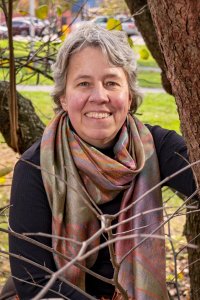Coronavirus Ecology

"My point here is not to cast blame but to raise awareness of the intricate, beautiful, dangerous web of interactions in which we live."
Intricate Web May Connect Forest Clearing to Coronavirus
Biological SciencesBy Laurie Anderson
 April 3, 2020
April 3, 2020
As an ecologist, I study the interactions between organisms and their environment. At first, the coronavirus pandemic may seem like a simple, terrifying case of a virus interacting with the human species. However, an ecological perspective shows that this story involves complex connections among multiple species, deforestation, and humans as a unique animal with its own patterns of behavior.
We also will see that this story has happened before.
A virus is a quasi-living thing that is simply genetic material wrapped in a fatty casing. It can reproduce only by hijacking the machinery of a complete cell, like a cell in the human lung, and using that cell as a factory to crank out more viruses. Our immune systems have evolved to fight off many viruses very effectively, but this coronavirus is new, and our immune systems don’t recognize it, which is why so many people sicken quickly and have unpredictable outcomes.
Where did it come from?
The most recent data show that this virus, like other coronaviruses, arose in horseshoe bats. Bats are an important part of a healthy ecosystem, particularly because they control insect populations, but they seem to have super-charged immune systems that allow them to be infected with lots of viruses without getting sick. When bats or bat feces and urine come into contact with other animals, a virus can make the jump into another species, where it can cause illness.
Current research suggests that this coronavirus didn’t jump directly from bats to humans – there was probably an intermediate host. The pangolin, a kind of scaled anteater, is one possibility, although uncertainties remain.
To those of us who study connections across species, this story sounds familiar: The coronavirus that caused the SARS epidemic of 2003 jumped from bats to civet cats to humans. The coronavirus that caused the MERS outbreak of 2012 jumped from bats to camels to humans.
These could be dismissed as chance events, but in fact, as the human population grows and moves deeper into undeveloped landscapes where more people and their domestic animals come into close contact with wildlife, we increase our risk for viral “spillover” (to quote the title of the 2012 book on this topic by David Quammen).
In addition, recent research has shown a connection between the outbreaks of various diseases, including mosquito-borne malaria and Ebola virus, and regional deforestation. The reasons for the connection are not clear, but it may be that animals which used to live apart from humans are now interacting with them at these new forest margins. Human-built structures, like barns and the eaves of houses, may be good roosting sites for particular bat species. The (often illegal) trade of wildlife parts for food and medicine can also expose humans to unusual viruses through direct consumption.
My point here is not to cast blame but to raise awareness of the intricate, beautiful, dangerous web of interactions in which we live. All humans need to use some natural resources—forest clearing and illegal wildlife trading and hunting are often carried out by people living with deep poverty. What alternatives can we provide for reasonable livelihoods that would allow wildlife to live safely in their own spaces and not be a commodity? Can we recognize that this coronavirus pandemic is part of a repeating pattern and change our behavior so that we do not enact it yet again?
One last observation as an ecologist: One of the most tragic aspects of viruses is that they spread by taking advantage of the human animal’s urge to be together, to connect to each other, to reach out in times of need. Social distancing wouldn’t matter much to a grizzly bear—they prefer to live solitary lives. In contrast, my son is heartbroken because, as he said, “Right now, really nice people are hazards.”
The virus is striking at one of our most powerful and positive human traits. For me, it helps to know that social distancing is hard because it is deeply unnatural to us and works against our fundamental instincts. And yet I believe that knowledge is power. Recognizing and understanding the connections that started and continue to spread the coronavirus is how the human species will triumph over it and prevent similar outbreaks in the future.
Laurie Anderson is a plant ecologist and professor of botany-microbiology. She is president of the board of directors for the Ecological Research as Education Network (EREN).
